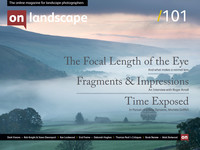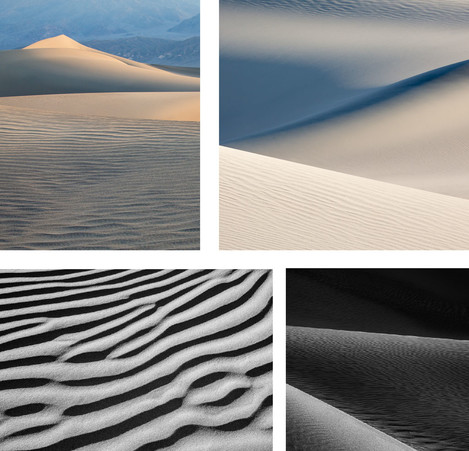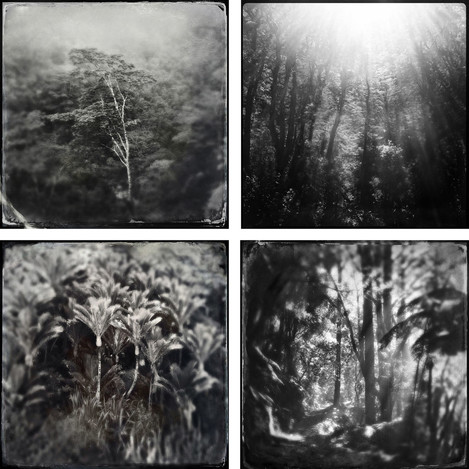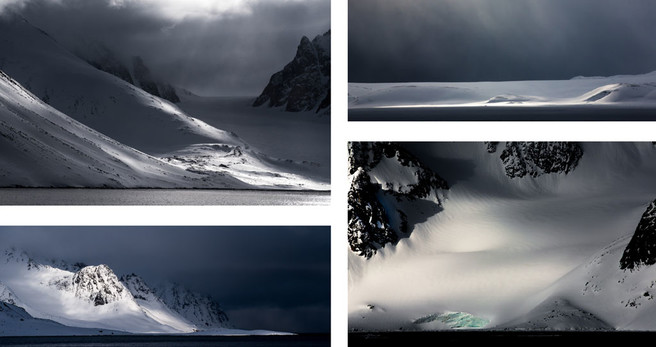David Driman, Jon Wyatt, Scott Walton & Stephen Hutchins

David Driman
I live in London, Ontario, Canada and am a hobbyist photographer, and a pathologist by profession. I enjoy landscape photography in all its variations, attempting to gravitate toward the simple and abstract.

Jon Wyatt
Jon Wyatt is a Cornwall–based photographer working on documentary landscape projects concerning environmental issues and landscape iconography.

Scott Walton
I love wandering the trails in canyons, forests or deserts; discovering where the paths might lead and what visual treasures await my eyes and camera.

Stephen Hutchins
The common thread in my life has been photography. My interest has waxed and waned and reached its present level only with the arrival of digital cameras, when the ability to process and control images myself offered new creative opportunities. I am over 60 years old, married with four children and split my time between Brussels and Sweden. Whenever family and other commitments allow, I will travel with my cameras, nearly always to the north of Europe and to the islands of the Arctic. Landscapes have been my passion from the earliest days and, apart from family portraits, it is rare for me to include people in my images.
Our 4x4 feature is a set of four mini portfolios from our subscribers, each consisting of four images related in some way. If you would like to submit your own 4x4 portfolio please visit this page for submission information.
David Driman
Lines and Curves
While I enjoy looking at a variety of photographic styles, landscape photography is where I’m most comfortable as a practising photographer. Over the years I’ve found myself moving away from what I might call documentary landscape photography to less obvious views, dominated more by lines, curves and shapes.
These seem to hold interest for me at the moment, but I expect this will change. Up until about a year ago I never had a single black and white image in “my portfolio” (i.e. on my computer) but I’ve started converting a few images to black and white and recently, have even caught myself shooting images with that intention...
On a recent trip to Death Valley with a good friend and fellow photographer, I particularly enjoyed photographing the dunes with the never-ending possibilities for abstract composition – especially highlighting lines and curves, and subtle forms. Not even an ultra-close encounter with a sidewinder rattlesnake (image not shown) could dampen our enthusiasm for those dunes, especially around sunrise and sunset when the shadows are at their best.
Jon Wyatt
Trip to New Zealand and Samoa
Shooting with the combination of his iphone and the Hipstamatic app began as a shorthand note-taking exercise to tell ‘behind-the-scenes’ stories or enliven travel days and downtime between assignments. A breath of fresh air after lugging his usual Phase One medium format kit, he enjoyed both the limitations and challenges of the different format. Though the Hipstamatic images were initially only used on his twitter account he’s now beginning to exhibit them and putting them together in an upcoming book project. The images shown here were shot in primary forests on a recent trip to New Zealand and Samoa. Read Jon's previous interview with On Landscape.
Scott Walton
Trees of the Southwest
The desert southwest in the US provides endless opportunities for creative photography. In many trips over two decades, I’ve discovered that in addition to all the wonderful red rock twisted into amazing shapes, there exists a lot of life growing in what appears on the surface to be a very arid landscape. I love to photograph trees wherever I find them and seeing these trees flourishing in harsh desert environments make them seem all the more precious.
Stephen Hutchins
Arctic light
These images were taken in Svalbard (Spitsbergen) in May. At that time of year, the snow is still thick on the ground but the midnight sun has already been in place for a month. I am fascinated by the interplay of light and snow on the islands, as it offers a terrible beauty that both attracts and repels the spectator. This is a land to which will take your soul if you will let it and that will always remain with you.
With the impact of climate change and the pressures of oil and gas exploration in the Arctic, my fear is that the images taken here may soon become matters of historical note rather than of a living landscape.
[/s2If]





















